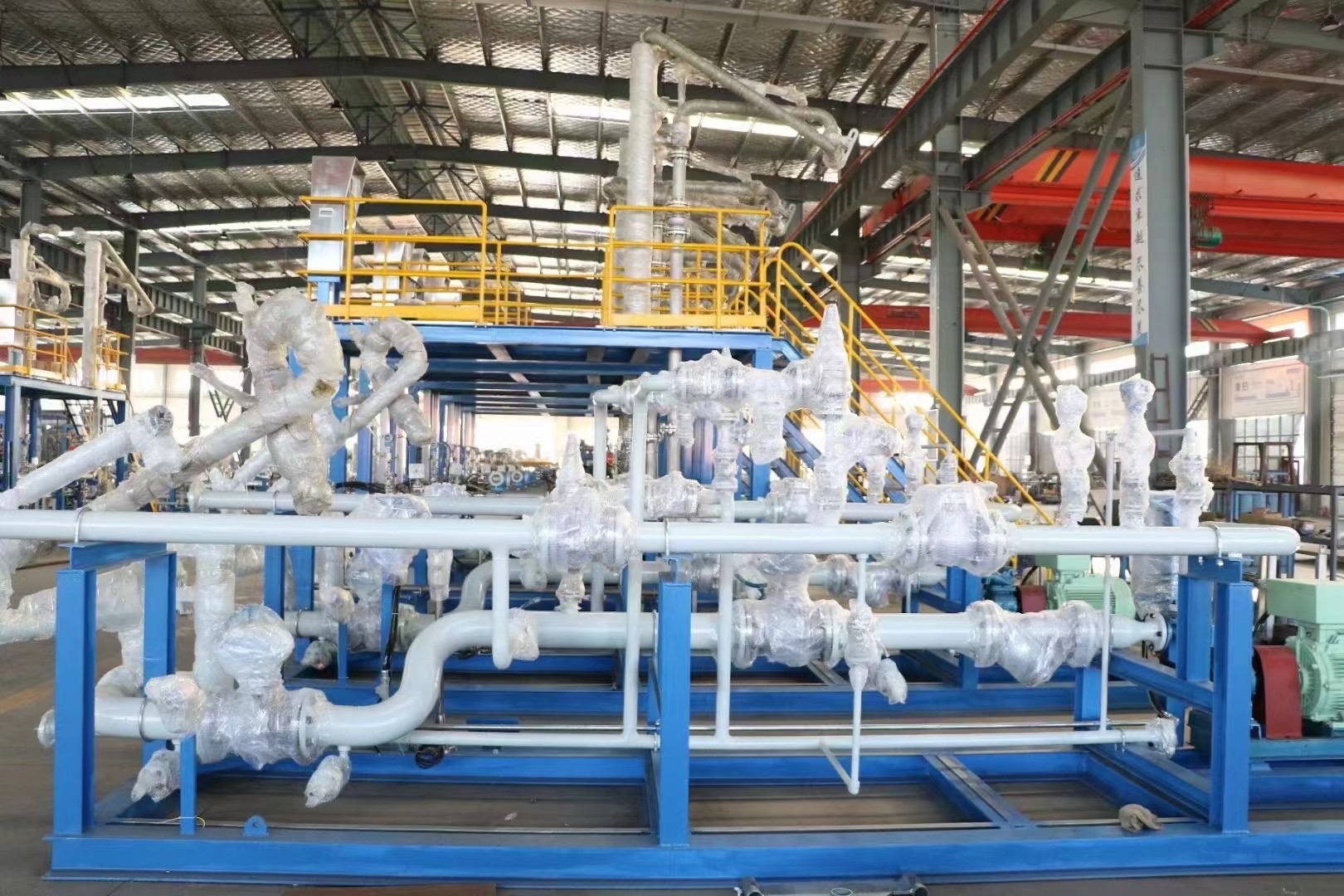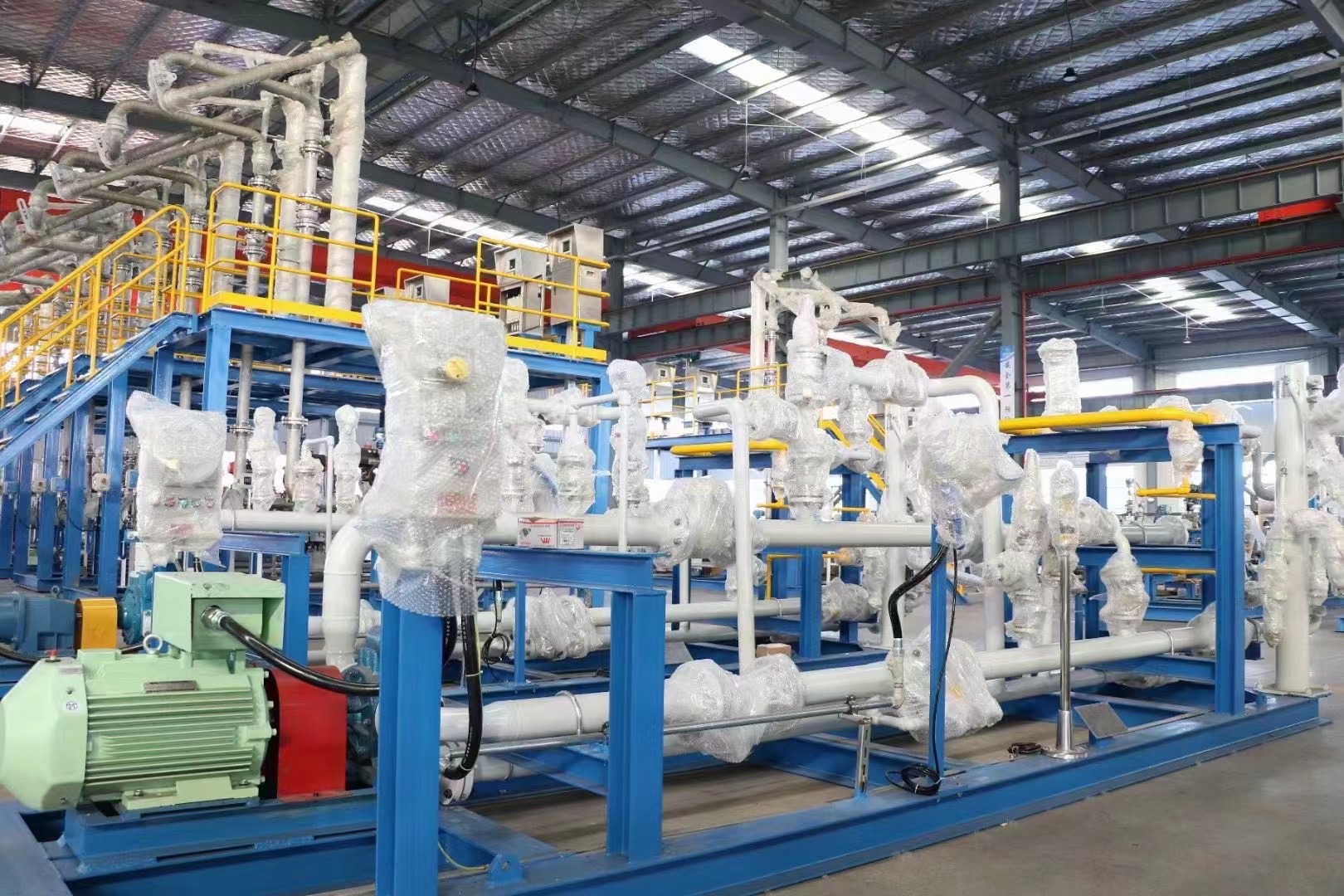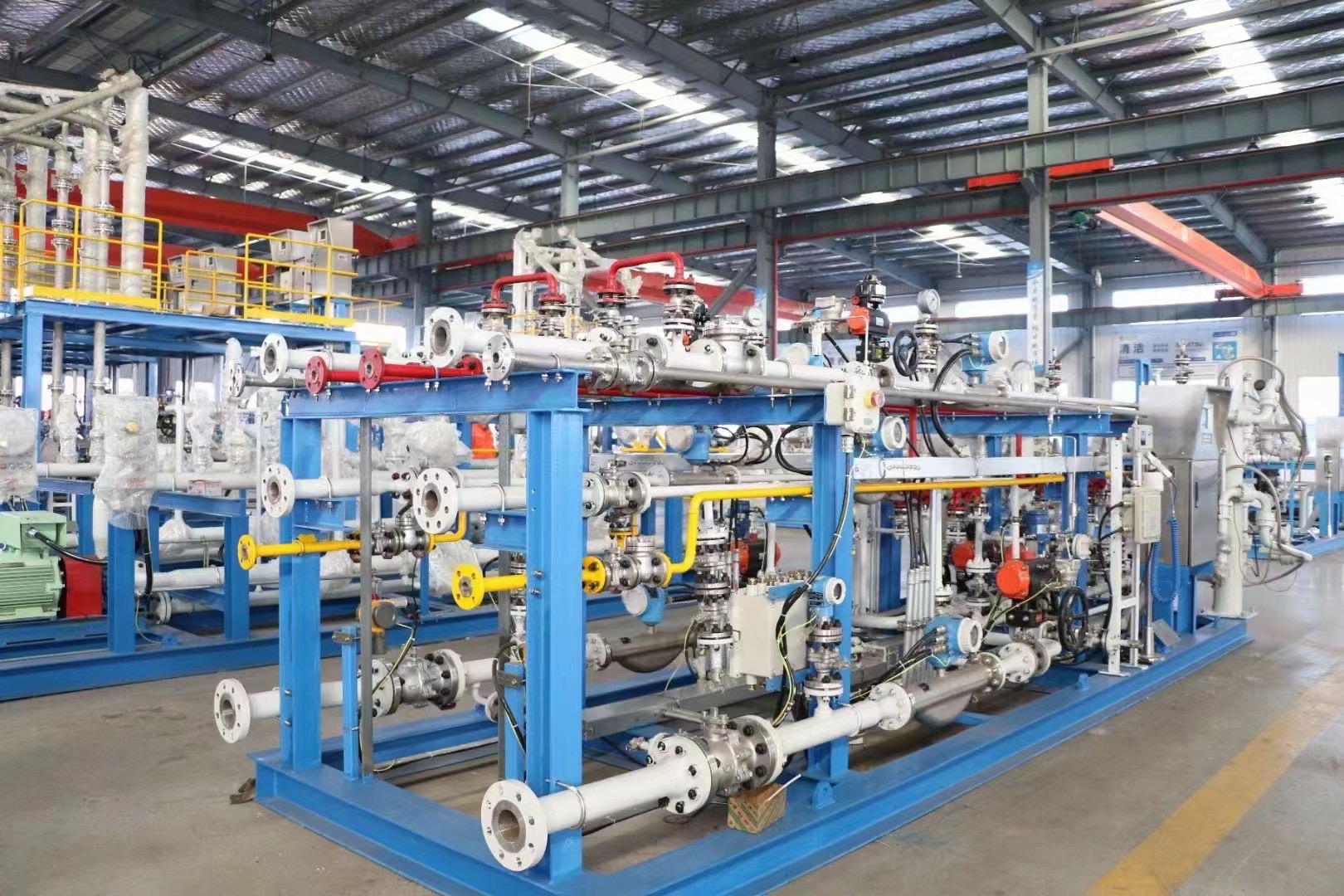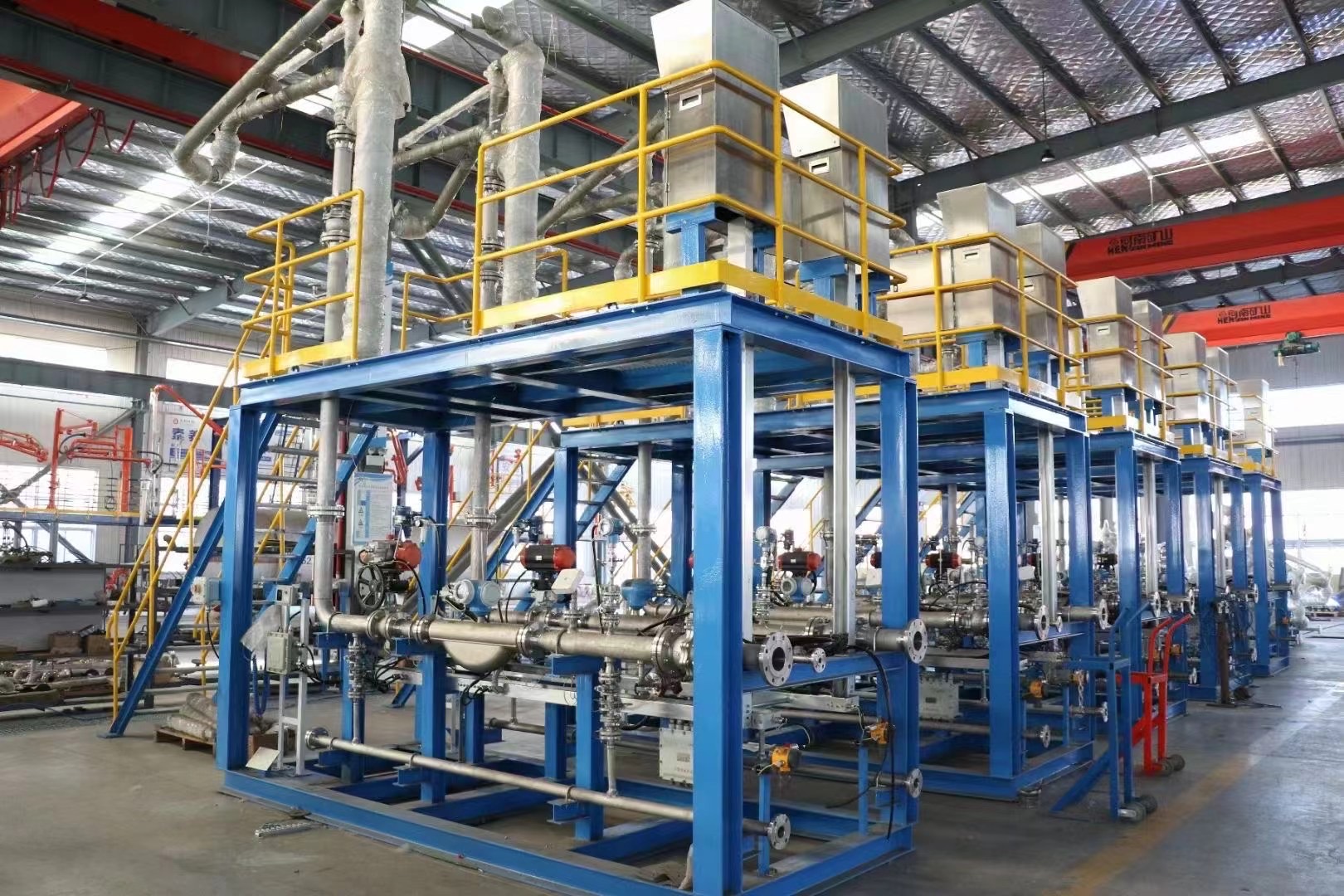PERFECT
| Availability: | |
|---|---|
Quantitative loading systems use advanced instruments to measure mass, pressure, and temperature, giving you reliable data for every transaction.
But it’s not just about accuracy. These systems speed up loading, reduce waste, and enhance safety by minimizing spills and vapor leaks. With industries pushing for efficiency and compliance, quantitative loading systems are the go-to solution for modern industrial demands.
You might ask, Why not just use manual measurements? Manual methods are slow and error-prone, while quantitative loading systems offer precision and speed.
· Precision: Exact measurements for every transaction.
· Efficiency: Speeds up loading, cutting downtime.
· Safety: Reduces spill risks with smart controls.
· Scalability: Fits small and large operations alike.

Using mass flow meters and transmitters, they measure the exact volume and mass of liquids, down to the last drop.
They provide certified data for buying, selling, or transferring fluids, ensuring fair deals. Think of it as a neutral referee in a high-stakes game.
Real-time data helps adjust flow rates and temperatures, boosting efficiency. It’s like a smart assistant tweaking your recipe on the fly.
Integrated controls prevent overfills and leaks, protecting workers and the environment.
Pre-assembled on a skid, they’re easy to install and relocate. It’s like a portable BBQ grill—ready to roll wherever you need it.

The quantitative controller receives the command to start loading and initiates the program, opening the valves while simultaneously measuring the flow rate via flow meter.
Mass flow meter's parameters like safety margin, safe flow rate, and advance time are set to precisely control the loading flow rate. It can reduce water hammer effects, enhance loading accuracy, and meet loading safety requirements.
Pressure and temperature transmitters are installed in the loading skid to monitor temperature and pressure during the loading process. When the temperature or pressure exceeds the presetting limits, the control system triggers an alarm.
A static grounding controller is installed to continuously monitor grounding resistance during loading. If grounding has problem, control valve can not be activated.
Safety relief valves are installed on the liquid/gas/nitrogen pipelines. In case of pressure exceeding the presetting value, the safety valves will be activated to discharge pressure.
It is used to prevent damage caused by unexpected lightning strikes.
The batch controller collects all signals from pressure/temperature transmitters, flow meters, static grounding, and valves, and then displays them on control panel.
Standard RS485/MODBUS or TCP/IP communication protocols, for real-time transmission of flow rate, temperature, pressure, valve positions, and static status to the DCS.
The quantitative loading/unloading skid is a safe and accurate loading/unloading equipment designed for oils and chemicals.
PERFECT LOADING integrates and assembles the required instruments together, including adjusting valves, pressure & temperature sensors, flow meters, overfilling & grounding sensors, safety valves, pumps and control panel,etc, in a skid frame.
All the types & brands of instruments in skid are customized. The delivery cycle and clients’ requirements will be given priority consideration when selecting the sub-vendors of instruments.
Upon on the site, the loading skid will be immediately put into use after connecting pipelines, anchor bolts, communication, and power supply.

These skids are like a well-orchestrated band, with each instrument playing its part. Here’s the lineup:
The backbone that connects the tank to the vehicle, often with swivel joints for flexibility. It’s the arm that reaches out to get the job done.
This Instrument measures the mass of the fluid as it moves, using Coriolis or ultrasonic technology. It’s like a high-tech weighbridge for liquids, accurate to the gram.
These sensors monitor pressure and temperature, feeding data to the system.
The brain that sets and monitors the exact amount to load, stopping the flow when done.
Control valves and pipes direct the fluid, ensuring smooth flow. They’re the plumbing that keeps everything connected and flowing.
A user interface for managing the system, often with a PLC or HMI. It’s the dashboard you use to steer the operation.

o 2” to 6” (DN50 to DN150), with 3” and 4” common for most applications.
o Matches typical tanker valve sizes.
o Up to 1.6 MPa (16 bar or 232 psi), handling high-pressure fluids.
o Some skids support up to 2.0 MPa for heavy-duty use.
o -40°C to +200°C (-40°F to +392°F), covering cold to hot fluids.
o Adjustable for various process needs.
o Up to 2,500 liters per minute (660 GPM) for mass flow meters, depending on size.
o Ensures fast, accurate loading.
o ±0.1% to ±0.5%, meeting custody transfer standards like OIML R 117.
o Delivers precision for financial and operational use.
o Customizable, typically 2m x 1m x 1.5m, depending on components.
o Compact for easy installation.
These specs make quantitative loading systems versatile for everything from small chemical batches to large fuel transfers.
· Carbon Steel: Strong and coated for corrosion resistance, like a sturdy frame.
· Stainless Steel (SS304/SS316L): Used for corrosive or food-grade fluids, resisting rust.
· Synthetic Rubber or Stainless Steel: Flexible and durable, handling pressure and chemicals.
· Stainless Steel or Alloy: Houses the sensor, built to last in harsh conditions.
· Polycarbonate or Aluminum: Lightweight casings with weatherproof seals, like a raincoat for electronics.
· Stainless Steel: Tough and corrosion-resistant, ensuring reliable flow control.
This material blend creates a skid that’s robust, adaptable, and ready for the toughest industrial environments.
Position the loading arm and connect it to the tanker via the flange or coupler. Power up the skid’s control system.
Input the desired batch volume into the controller, and calibrate the mass flow meter with test runs.
Open the valves to start the flow, with the mass flow meter tracking mass and transmitters monitoring conditions.
Watch the control panel for real-time data, adjusting flow or stopping if overfill risks arise.
The batch controller halts the flow when the target is reached. Disconnect the arm and log the data.
These skids are the go-to for industries needing precise fluid handling. Here’s where they excel:
Measuring fuel for custody transfer: They ensure accurate billing and fast loading. They’re the precision cashiers of the fuel world.
Tracking corrosive liquids: The skid’s seals and meters handle it safely.
Monitoring crude oil or refined products: They optimize process efficiency.
Measuring edible oils or syrups: Stainless steel options prevent contamination.
Handling bunker fuel: They provide precise data for ship refueling.
From terminals to marine ports, these skids keep fluid measurements on point.
These skids are robust, but they’ve got hurdles:
Setting up requires precise alignment.
Sensors and meters need regular checks to stay accurate.
Higher upfront cost pays off with long-term savings.
Routine maintenance and proper training keep them running smoothly.
· AI Integration: Smart algorithms for predictive maintenance.
· Eco-Designs: Energy-efficient components for sustainability.
· Wireless Tech: Remote monitoring for real-time insights.
Quantitative loading systems use advanced instruments to measure mass, pressure, and temperature, giving you reliable data for every transaction.
But it’s not just about accuracy. These systems speed up loading, reduce waste, and enhance safety by minimizing spills and vapor leaks. With industries pushing for efficiency and compliance, quantitative loading systems are the go-to solution for modern industrial demands.
You might ask, Why not just use manual measurements? Manual methods are slow and error-prone, while quantitative loading systems offer precision and speed.
· Precision: Exact measurements for every transaction.
· Efficiency: Speeds up loading, cutting downtime.
· Safety: Reduces spill risks with smart controls.
· Scalability: Fits small and large operations alike.

Using mass flow meters and transmitters, they measure the exact volume and mass of liquids, down to the last drop.
They provide certified data for buying, selling, or transferring fluids, ensuring fair deals. Think of it as a neutral referee in a high-stakes game.
Real-time data helps adjust flow rates and temperatures, boosting efficiency. It’s like a smart assistant tweaking your recipe on the fly.
Integrated controls prevent overfills and leaks, protecting workers and the environment.
Pre-assembled on a skid, they’re easy to install and relocate. It’s like a portable BBQ grill—ready to roll wherever you need it.

The quantitative controller receives the command to start loading and initiates the program, opening the valves while simultaneously measuring the flow rate via flow meter.
Mass flow meter's parameters like safety margin, safe flow rate, and advance time are set to precisely control the loading flow rate. It can reduce water hammer effects, enhance loading accuracy, and meet loading safety requirements.
Pressure and temperature transmitters are installed in the loading skid to monitor temperature and pressure during the loading process. When the temperature or pressure exceeds the presetting limits, the control system triggers an alarm.
A static grounding controller is installed to continuously monitor grounding resistance during loading. If grounding has problem, control valve can not be activated.
Safety relief valves are installed on the liquid/gas/nitrogen pipelines. In case of pressure exceeding the presetting value, the safety valves will be activated to discharge pressure.
It is used to prevent damage caused by unexpected lightning strikes.
The batch controller collects all signals from pressure/temperature transmitters, flow meters, static grounding, and valves, and then displays them on control panel.
Standard RS485/MODBUS or TCP/IP communication protocols, for real-time transmission of flow rate, temperature, pressure, valve positions, and static status to the DCS.
The quantitative loading/unloading skid is a safe and accurate loading/unloading equipment designed for oils and chemicals.
PERFECT LOADING integrates and assembles the required instruments together, including adjusting valves, pressure & temperature sensors, flow meters, overfilling & grounding sensors, safety valves, pumps and control panel,etc, in a skid frame.
All the types & brands of instruments in skid are customized. The delivery cycle and clients’ requirements will be given priority consideration when selecting the sub-vendors of instruments.
Upon on the site, the loading skid will be immediately put into use after connecting pipelines, anchor bolts, communication, and power supply.

These skids are like a well-orchestrated band, with each instrument playing its part. Here’s the lineup:
The backbone that connects the tank to the vehicle, often with swivel joints for flexibility. It’s the arm that reaches out to get the job done.
This Instrument measures the mass of the fluid as it moves, using Coriolis or ultrasonic technology. It’s like a high-tech weighbridge for liquids, accurate to the gram.
These sensors monitor pressure and temperature, feeding data to the system.
The brain that sets and monitors the exact amount to load, stopping the flow when done.
Control valves and pipes direct the fluid, ensuring smooth flow. They’re the plumbing that keeps everything connected and flowing.
A user interface for managing the system, often with a PLC or HMI. It’s the dashboard you use to steer the operation.

o 2” to 6” (DN50 to DN150), with 3” and 4” common for most applications.
o Matches typical tanker valve sizes.
o Up to 1.6 MPa (16 bar or 232 psi), handling high-pressure fluids.
o Some skids support up to 2.0 MPa for heavy-duty use.
o -40°C to +200°C (-40°F to +392°F), covering cold to hot fluids.
o Adjustable for various process needs.
o Up to 2,500 liters per minute (660 GPM) for mass flow meters, depending on size.
o Ensures fast, accurate loading.
o ±0.1% to ±0.5%, meeting custody transfer standards like OIML R 117.
o Delivers precision for financial and operational use.
o Customizable, typically 2m x 1m x 1.5m, depending on components.
o Compact for easy installation.
These specs make quantitative loading systems versatile for everything from small chemical batches to large fuel transfers.
· Carbon Steel: Strong and coated for corrosion resistance, like a sturdy frame.
· Stainless Steel (SS304/SS316L): Used for corrosive or food-grade fluids, resisting rust.
· Synthetic Rubber or Stainless Steel: Flexible and durable, handling pressure and chemicals.
· Stainless Steel or Alloy: Houses the sensor, built to last in harsh conditions.
· Polycarbonate or Aluminum: Lightweight casings with weatherproof seals, like a raincoat for electronics.
· Stainless Steel: Tough and corrosion-resistant, ensuring reliable flow control.
This material blend creates a skid that’s robust, adaptable, and ready for the toughest industrial environments.
Position the loading arm and connect it to the tanker via the flange or coupler. Power up the skid’s control system.
Input the desired batch volume into the controller, and calibrate the mass flow meter with test runs.
Open the valves to start the flow, with the mass flow meter tracking mass and transmitters monitoring conditions.
Watch the control panel for real-time data, adjusting flow or stopping if overfill risks arise.
The batch controller halts the flow when the target is reached. Disconnect the arm and log the data.
These skids are the go-to for industries needing precise fluid handling. Here’s where they excel:
Measuring fuel for custody transfer: They ensure accurate billing and fast loading. They’re the precision cashiers of the fuel world.
Tracking corrosive liquids: The skid’s seals and meters handle it safely.
Monitoring crude oil or refined products: They optimize process efficiency.
Measuring edible oils or syrups: Stainless steel options prevent contamination.
Handling bunker fuel: They provide precise data for ship refueling.
From terminals to marine ports, these skids keep fluid measurements on point.
These skids are robust, but they’ve got hurdles:
Setting up requires precise alignment.
Sensors and meters need regular checks to stay accurate.
Higher upfront cost pays off with long-term savings.
Routine maintenance and proper training keep them running smoothly.
· AI Integration: Smart algorithms for predictive maintenance.
· Eco-Designs: Energy-efficient components for sustainability.
· Wireless Tech: Remote monitoring for real-time insights.
content is empty!